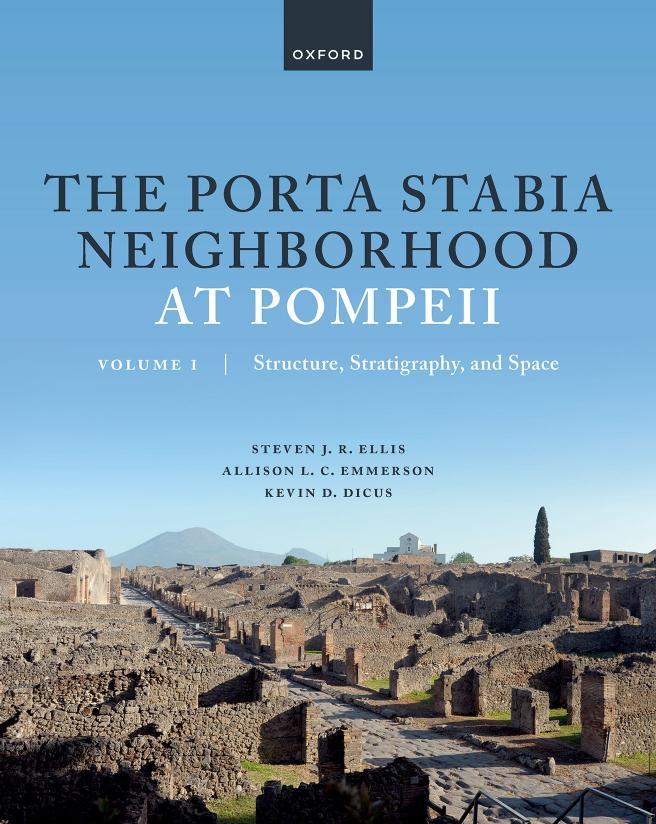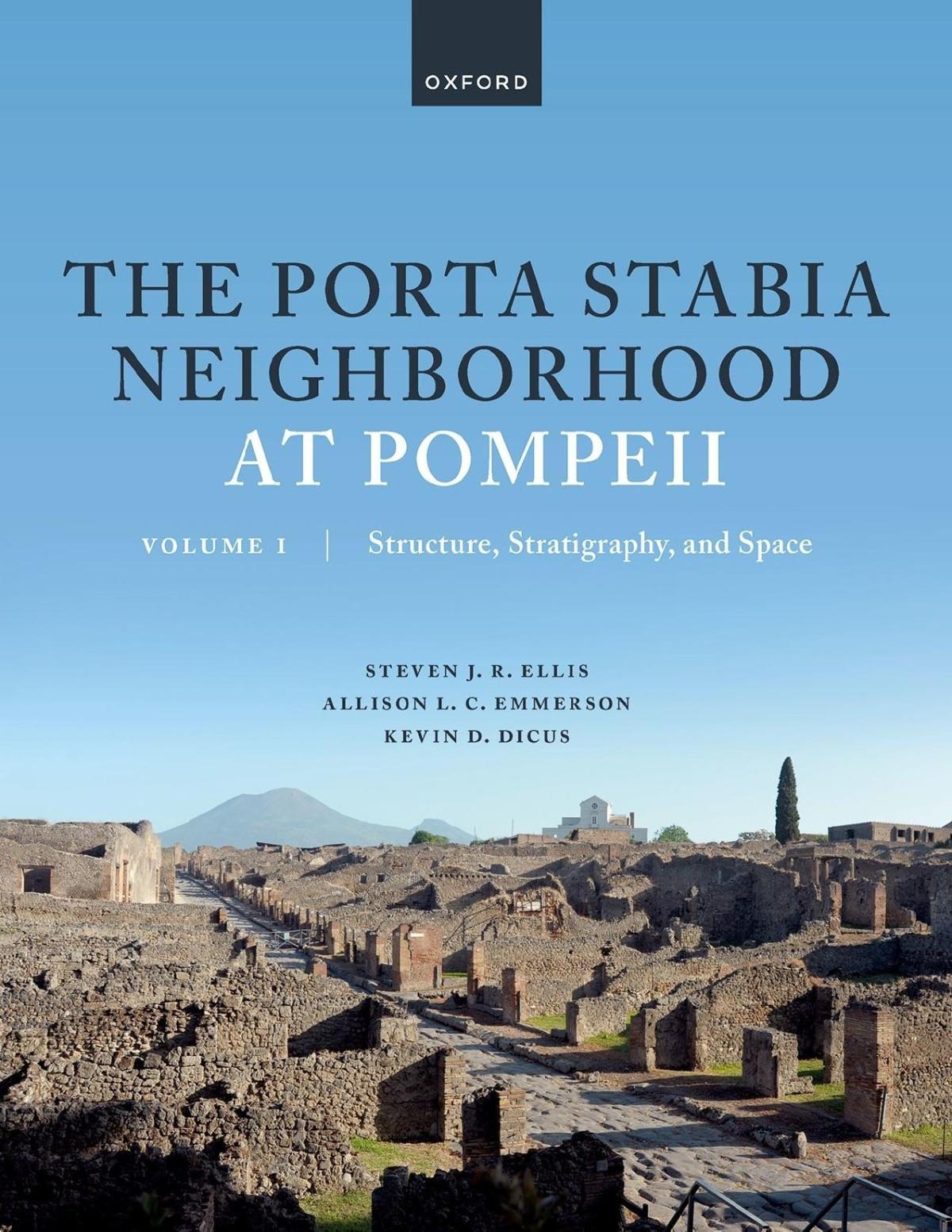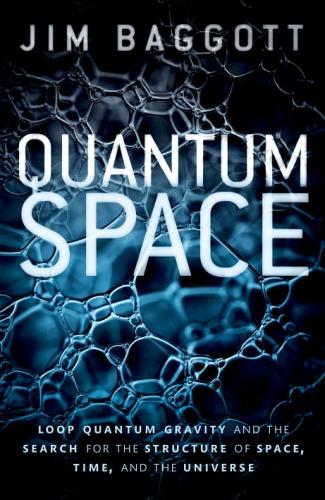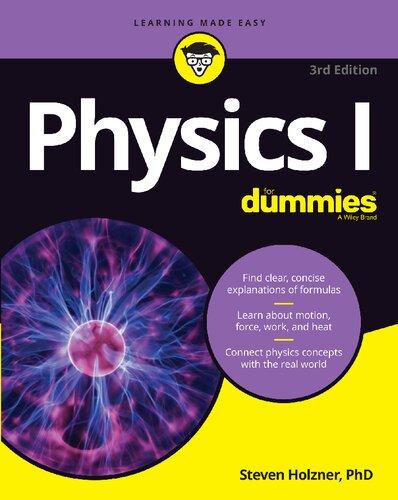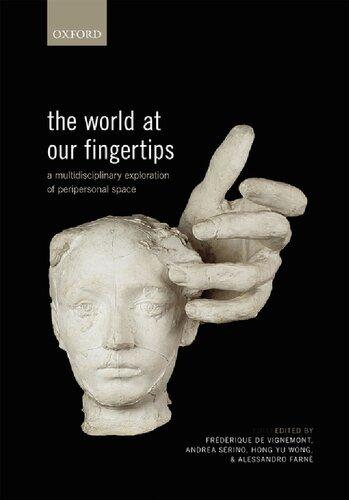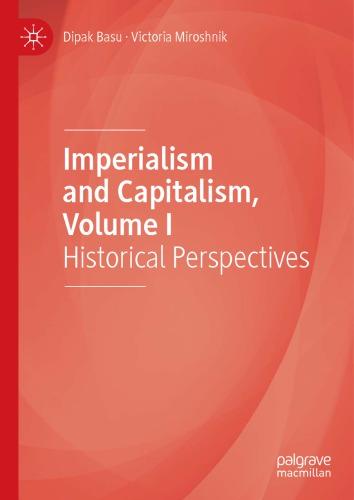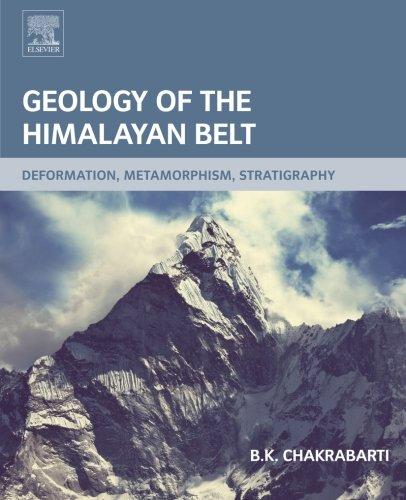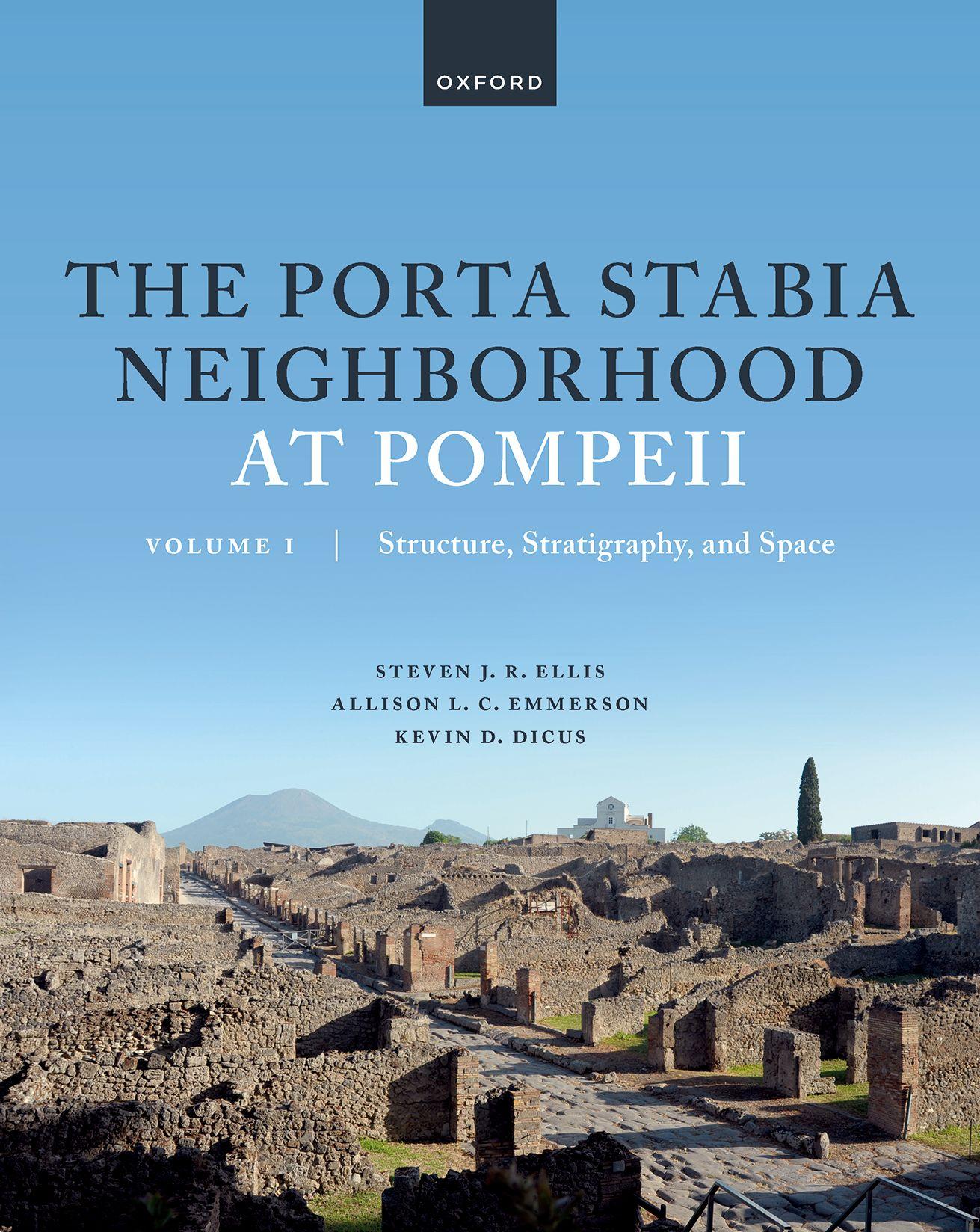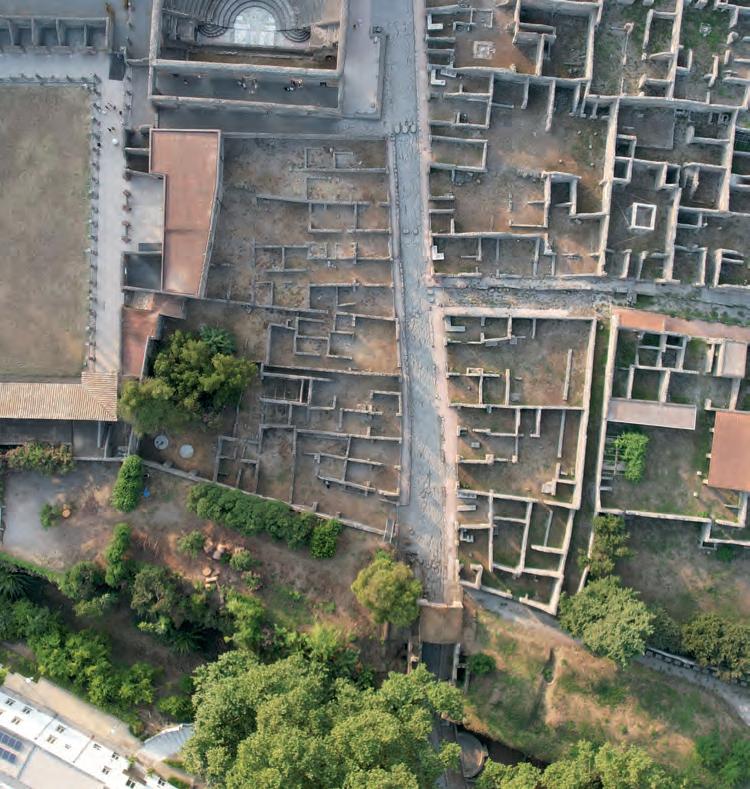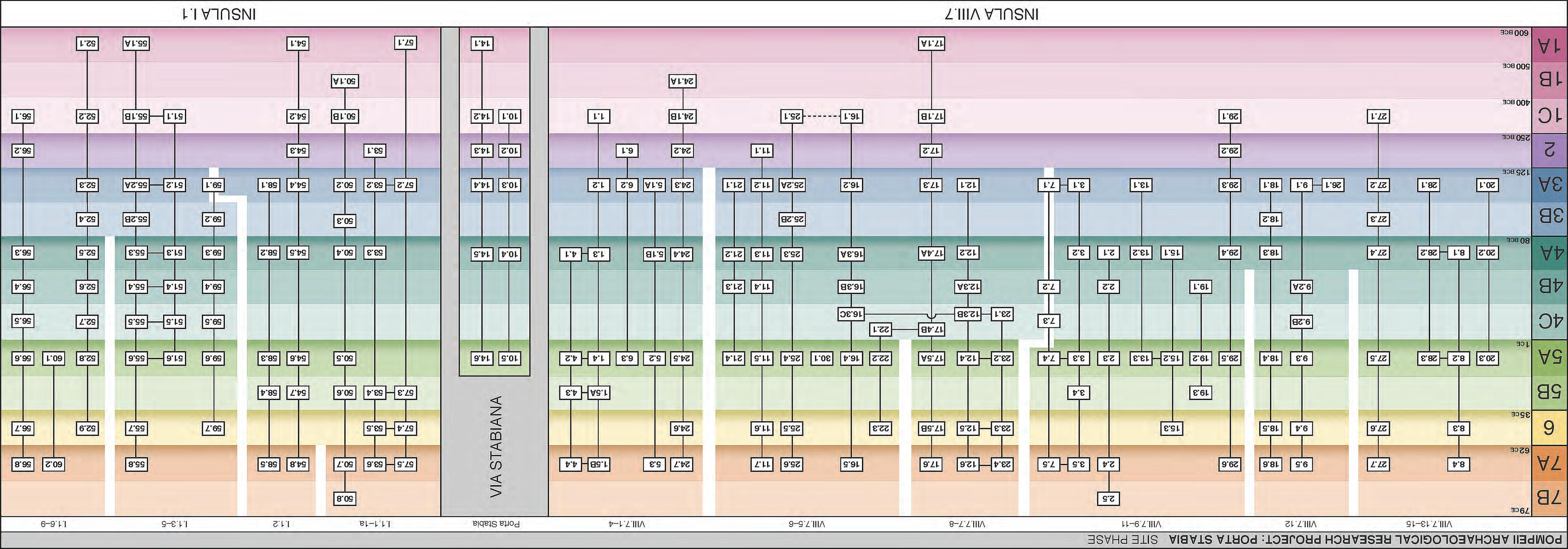LIST OF ILLUSTRATIONS
1.01
1.03 The site-wide Harris Matrix for the excavations of Insulae VIII.7 and I.1; each unit represents the phase of a trench (the horizontal arrangement is according to the spatial relationships of and between each property)
1.04
1.06
VIII.7 and I.1 during
of Insulae VIII.7 and I.1 during Phase 3a and 3b
1.07 Plan of Insulae VIII.7 and I.1 during Phase 4a, 4b, and 4c
1.08 Plan of Insulae VIII.7 and I.1 during Phase 5a and 5b
1.09
1.11 Reconstructed view of the Porta Stabia neighborhood, looking north (digital reconstruction by Gareth Blayney on behalf of the project)
3.05 Screenshot of the Finds tab including the main small finds list page
3.06 Screenshot of the list of small finds recovered from selected SU
3.07 Screenshot of the list of absolute dates for artifacts from SUs in selected phase
3.08 Screenshot of the detailed information about the selected small find (cf. Figs. 3.05 and 3.06) 40
3.09 Screenshot of the page for analyzing spatial, chronological, and contextual distributions of artifact classes. The number of structural fragments is shown here as a percentage of all small finds recovered from different contextual categories of SUs
4.01 La Vega’s 1809 map of what would become the Porta Stabia neighborhood, indicating the partial exposure of the northern limits of Insula VIII.7
4.02 Tascone’s 1879 map of Insulae VIII.7 and I.1
4.03 Jacob Hackert’s 1799 oil painting of Pompeii, with the highest parts of insula VIII.7 exposed and those of Insula I.1 not yet excavated. Attingham Park, The Berwick Collection, National Trust; inventory no. 608992 46
4.04 Close-up of Jacob Hackert’s 1799 rendering of the rear (westernmost) area of Insula VIII.7; the awning against the Quadriporticus may have covered the lime pit. Attingham Park, The Berwick Collection, National Trust; inventory no. 608992 46
4.05 The outline of the lime pit survives against the outside of the Quadriporticus (WF 178)
4.06 The distribution of paintings and inscriptions across Insulae VIII.7 and I.1 (courtesy of G. Tibbott)
4.07 The quantity of portable finds sorted by material class across Insulae VIII.7 and I.1 (courtesy of Gina Tibbott)
4.08 The distribution of stray coins found in the 79 ce contexts for Insulae VIII.7 and I.1 (courtesy of Gina Tibbott)
4.09 Drawing by Discanno of the painted lararium (Hospitium Hermetis) in Room 23 of I.1.6–9, WF 1220 (after PPM I, 7, no. 4)
4.10 The triclinium and masonry table in Room 46 of VIII.7.6–9, viewed from the south
4.11 Close-up of masonry table in Room 46 of VIII.7.6–9, with a staging of the various objects found nearby
4.12 The military diploma of Marcus Surus Garasenus, in two leaves. Side A is the visible, principal text; Sides B and C are the inner, concealed “copies” of the text; Side D is the visible collection of witnesses (with evidence for the bindings and seals). Leaves are 16.5 cm × 12.5 cm. Photos courtesy of MANN
47
52
54
55
56
57
57
58
5.01 Aerial image of Insulae VIII.7 and I.1 with GPR data indicating shallow depth results 60
5.02 The presence of walls from Phase 4 in the GPR survey of I.1.3–5 (Time-slice 06: ~0.64–0.81m) 64
5.03 The presence of wall (SU 1050) in Room 7, farther north of its excavation in Room 1 of VIII.7.1–4 64
5.04 The corner of the Phase 4a tank in Room 9 of VIII.7.1–4; note the potential presence of tanks at a similar level in Room 7 (Time-slice 06: ~1.05–1.30m)
5.05 The presence of Fish-Salting Vat 5 in the GPR survey of Room 101 of I.1.1–2 (Time-slice 06: ~0.64–0.81m) 65
5.06 The presence of Drain 25 northward of its excavation in Room 78 of VIII.7.13–15; note also the potential presence of Drain 30 (Time-slice 04: ~0.63–0.88m)
5.07 The presence of Drain 3 in VIII.7.1–4 (Time-slice 03: ~0.42–0.67m)
5.08 The shallow, structural feature in Room 51 of VIII.7.9–11 (Time-slice 04: ~0.63–0.88m)
6.01 Reconstructed view of the Porta Stabia neighborhood, looking north (drawing by Gareth Blayney on behalf of the project)
6.02 The retail shops, bars, restaurants, and inns of Insulae VIII.7 and I.1
6.03 The inns at the Porta Stabia neighborhood
6.04 VIII.7.12 in its final phase
6.05 The restaurants at the Porta Stabia neighborhood
6.06 The bars at the Porta Stabia neighborhood
6.07
shops at the Porta
6.08 An example of the use of opus incertum at the Porta Stabia neighborhood (the south wall (WF 1061) in Room 108 at I.1.2)
6.09
6.10 The Wall Construction Units (WCUs) for Insula VIII.7
6.11 The Wall Construction Units (WCUs) for Insula I.1
7.01 The urban landscape of the Porta Stabia as seen from the air, looking
7.02 The lava cliff to the west of the Porta Stabia, beneath Insulae VIII.2
7.03 Exposed lava in the north face of Trench 26000 in Room 65 of VIII.7.12
7.04 Exposed lava in the courtyard of the house at I.2.2–4. Photo courtesy of Eric Poehler
7.05 The location of excavated trenches across Insulae VIII.7, I.1, and the Porta Stabia
7.06 The typical geological sequence (as encountered here in Trench 51000) of lava (SU 51131) beneath the yellow Mercato ash (with white lapilli at the top; SU 51125), and the brown prehistoric paleosol/ash above (also SU 51125). (scale = 50 cm)
7.07 Accumulation of colluvial soil in Trench 54000 (within later Room 106 of I.1.2). (scale = 50 cm)
8.01 Plan of Insulae VIII.7 and I.1 during Phase 1a
8.02 The Phase 1a road surface, with possible wheel rut, in Trench 52000 under (later) I.1.6–9
8.03 Location of the pappamonte foundations of a Phase 1a building in the southern area of (later) Insula I.1
8.04 The pappamonte foundations in Trench 54000 (SU 54121); Room 106 of (later) I.1.2
8.05 Section view of the construction trench for the pappamonte foundations in Trench 54000; Room 106 of (later) I.1.2
8.06 The two pappamonte blocks in the northeast corner (right of photo) of Room 37 in (later) VIII.7.7–8
8.07 The tree-throw pit (SU 50094) in Trench 50000; viewed from the west. (scale = 50 cm)
8.08 Plan of Insulae VIII.7 and I.1 during Phase 1c
8.09 The hard-packed gray volcanic ash road (of Phase 1c) overlying the earlier Mercato ash road (from Phase 1a); Room 118 of (later) I.1.3–5
8.10 Section of sequence of gray ash road revealed in Trench 54000; Room 106 of (later) I.1.2. (scale = 50 cm)
8.11 Section of gray ash surface in window trench southeast of later Fish-Salting Vat 6; Room 106 of (later) I.1.2. (scale = 50 cm)
8.12 The gray ash and cobblestone road (SU 54058) in Room 106 of (later) I.1.2. Shown from above (top) and in section (bottom)
8.13 Phase 1c wall (Sus 55113 and 55118) in Room 120 of (later) I.1.3–5, viewed from the south
8.14 Phase 1c wall formed by three irregularly shaped pappamonte blocks (SU 16071); Room 15 of (later) VIII.7.5–6
8.15 One of the two irregularly shaped pappamonte blocks that had been incorporated into the foundation of a later wall; Room 15 of (later) VIII.7.5–6
8.16 The single pappamonte block in the southeast corner of Room 1 in (later) VIII.7.1–4, topped by courses of small lava stones; viewed from the north
8.17 Ritual pit cut in association with the pappamonte foundation (Ritual Context 11) in Room 15 of (later) VIII.7.5–6; viewed from the north
8.18 Ritual pit (Ritual Context 11) in Room 15 of (later) VIII.7.5–6 during excavation; viewed from the east
9.01 Plan of Insulae VIII.7 and I.1 during Phase 2
9.02 Kiln 1 under Room 103 of (later) I.1.1/10; viewed from the north
9.03 Outline of the shape of Kiln 1 under Room 103 of (later) I.1.1/10; viewed from the south
9.04 The rounded tank in Room 37 of (later) VIII.7.7–8
9.05 The rounded tank with the pipe and perforated lead sheet in Room 37 of (later) VIII.7.7–8
9.06
Fish-Salting Vat 9 in Room 106 of (later) I.1.2
9.07 Tank in Room 106 of (later) I.1.2
9.08 The “sidewalk” surface beneath (the later) Room 9 of VIII.7.1–4; viewed from the west
10.01 Plan of Insulae VIII.7 and I.1 during Phase 3a
10.02 Plan of Property VIII.7.1–4 during Phase 3a
10.03 Plan of Property VIII.7.5–8 during Phase 3a
10.04 Plan of Property VIII.7.9–13 during Phase 3a
10.05 The cesspit (Waste Feature 14) in Room 58 of (later) VIII.7.12
10.06 The eastern tank in Room 48 of VIII.7.9–13
Waste Feature 13 in (later) Rooms 57/66 of VIII.7.12
10.08 Soak-Away 17 built with WCU 014 in Room 68 of (later) VIII.7.14–15; viewed from the north
10.09 Plan of Property I.1.1–2 during Phase 3a
10.10 The poured mortar foundation for the eastern boundary wall of I.1.1–2 (WCU 1030); viewed from above
10.11 The poured mortar foundation for the eastern boundary wall of I.1.1–2 (WCU 1030); viewed in section
10.12 Kiln 2 in Room 105 of I.1.1–2
10.13 Interior of Kiln 2, with sections of the floor surface
10.14 Interior of Kiln 2 during excavation with an olla in situ; form of the vessel pulled from the kiln
10.15 Ritual Context 12 in Room 103 of I.1.1–2 during excavation; below: the nine votive cups at the time of excavation
10.16 The public well in Room 102 of I.1.1–2; note the increased wear marks along the western internal face
10.17 The four sections of the well in Room 102 of I.1.1–2, with the coring to indicate the nature and depths of the deposits
10.18 The paving of the via Stabiana
10.19 The earlier curbstones of the via Stabiana; note also the later lead pipe that fed the fountain, as well as Drain 1 (at left). Viewed from the south
10.20
and I.1 during Phase 3b
VIII.7.9–13 during Phase 3b
10.23 Drain 21 leading toward Waste Feature 14 in Room 58 of VIII.7.9–13
10.24 Plan of Property I.1.1–2 during Phase 3b
11.01 Aerial view indicating the properties (VIII.7.13–15, I.1.3–5, and I.1.6–9) that were newly constructed in Phase 4; viewed from the west
Plan of
VIII.7 and I.1 during Phase 4a
VIII.7.13–15 during Phase 4a
11.04 Drain 25 in the northwest corner of (later) VIII.7.15; viewed from the west
11.05 Stone structure (SU 28047) in the northwest corner of (later) VIII.7.15; viewed from the south
11.06 Terracotta fragments of a left foot (TC28-5) and a face (TC28-6); both from SU 28012
11.07 Plan of Property I.1.3–5 during Phase 4a
11.08 The “workbench” along the southern side of (later) Room 118 of I.1.3–5
11.09 Soak-Away 8 within Waste Feature 20 in (later) Room 118 of I.1.3–5
11.10 Soak-Away 8 (Punic amphora of type: T-7.4.1.1) within Waste Feature 20 after the removal of the fills (SUs 51072 and 51087); in (later) Room 118 of I.1.3–5, viewed from the south
11.11
11.12
The pit (SU 55098) in Room 120 of I.1.3–5 following excavation; viewed from the south
The lava bedrock at the bottom of the pit (SU 55098) in Room 120 of I.1.3–5
11.13 The footholds cut into the pit (SU 55098) in Room 120 of I.1.3–5
11.14 Plan of Property I.1.6–9 during Phase 4a
11.15
Fish-Salting Vat 7 in Room 122 of I.1.6–9; viewed from the south
11.16 Plan of Property VIII.7.5–8 during Phase 4a
11.17
Fish-Salting Vat 1 (at left, beneath entrance) in Room 32 of VIII.7.5–8; note also Cistern 5 (center) and the column base (at right), both of Phase 5a
11.18 Waste Feature 12 in Room 37 of VIII.7.5–8
11.19 The opus signinum surface (SU 25023) in Room 20 of VIII.7.5–8
11.20 The Sarno limestone blocks that formed the latrine (Waste Feature 2) in Room 20 of VIII.7.5–8
11.21 Plan of Property VIII.7.9–12 during Phase 4a
11.22
Fish-Salting Vat 2 just inside the entrance (at left) to Room 38 of VIII.7.9–10; viewed from the north
11.23 Cistern 4 in Room 38 of VIII.7.9–12; visible also is Fish-Salting Vat 2 at left (not yet fully excavated), and Soak-Away 1
11.24 Fish-Salting Vat 3 in Room 48 at entrance VIII.7.11
11.25 Fish-Salting Vat 4 in Room 58 at entrance VIII.7.12
11.26 The tannery tanks in Room 56 of VIII.7.9–12; viewed from above looking west
11.27 The tannery tanks in Room 56 of VIII.7.9–12; viewed from the south with footholds visible in the southern tanks
11.28 The amphora base, with the ash-based contents, in situ in Room 55 of VIII.7.9–12
11.29 Plan of Property I.1.1–2 during Phase 4a
11.30 Fish-Salting Vat 5 in Room 101 of I.1.1–2; viewed from the east. Note also Threshold 16 and Bar Counter 1
11.31 Fish-Salting Vat 6 in Room 106 of I.1.1–2; viewed from the west. Note also Bar Counter 2
11.32 The bronze spatula (BR54-14) and lead weight, shaped in the form of a Greco-Italic amphora (PB54-3), recovered from the lowermost deposit of Fish-Salting Vat 6 (SU 54044) in Room 106 of I.1.1–2 179
11.33 The tile (SU 58067) and amphora (SU 58066) in situ in Room 107/8 of I.1.1–2, and after excavation
11.34 Plan of Property VIII.7.1–4 during Phase 4a
11.35 The tank (SU 24033) and dolium base (SU 24026) in Room 9 of VIII.7.3–5; viewed from the west
11.36 Plan of Property I.1.3–5 during Phase 4b
11.37 The architectural terracottas recovered from I.1.3–5 (above), with one (the larger) alongside those from I.9.9 (below)
11.38 Locations for the architectural terracottas recovered from I.3–5 and I.9.9
11.39 Foundations for the brick pillar (WCU 1058) in I.1.3–5; viewed from the west
11.40 Cistern 8 in Room 118 of I.1.3–5; viewed from the west
11.41 Doorstop 3 in Room 118 of I.1.3–5
11.42 Part of the shaft of the well in I.1.3–5, beneath the later (Phase 5a) Cooking Facility 9; viewed from the west
11.43 Plan of Property I.1.6–9 during Phase 4b
11.44 Fish-Salting Vat 8 in Room 122 of I.1.6–9; viewed from the south
11.45 Plan of Property VIII.7.5–8 during Phase 4b
11.46 Cistern 3 in (later) Room 44 of VIII.7.5–8: left southern end (note the Phase 5a blockage and the Phase 7 repairs); right northern end; bottom mouth
11.47 Plan of Property VIII.7.9–11 during Phase 4b
11.48 Plan of Property VIII.7.12 during Phase 4b
11.49 Plan of Property I.1.3–5 during Phase 4c
11.50 The collapse of the surface (SU 59047), and Cistern 9 (SU 59039) in Room 114 of I.1.3–5; viewed from the north
11.51 Plan of Property I.1.6–9 during Phase 4c
11.52 Plan of Property VIII.7.5–8 during Phase 4c
11.53 The basin (SU 16020) in Room 15 of VIII.7.5–8
11.54 Plan of Property VIII.7.12 during Phase 4c
12.01 An indication of the types of properties (as they will appear in their final form), noting the predominance of retailing and hospitality activities that mostly appear from Phase 5
12.02 Plan of Insulae VIII.7 and I.1 during Phase 5a
12.03 Plan of Property VIII.7.9–11 during Phase 5a
12.04 Drain 18 along with the filling of Fish-Salting Vat 3 in Room 48 of VIII.7.9–11; viewed from the west. Note also Threshold 11
12.05 The viewshed from the street through to the rear room (Room 56) of VIII.7.9–11
12.06 a. Drain 17 passing through the newly opened doorway that had previously separated properties VIII.7.5–8 (at right) and VIII.7.9–11 (at left); viewed from the west. b. Inlet basin to Drain 17 in Room 44 of VIII.7.9–11
12.07 The catchment in Drain 17 (above) with lava capstone (below) in VIII.7.9–11
12.08 The projection of the downpipe (SUs 15009 and 2065) from Room 55 southward into a basin (SU 2034) in Room 46 in VIII.7.9–11; note the north wall of the tank from Phase 4b
12.09 The water system in Room 46 of VIII.7.9–11: top, overflow from the first settling (and display) basin; middle, the second settling basin; bottom, access to Cistern 3
12.10 Cooking Facility 4 in Room 44 of VIII.7.9–11; viewed from the north
12.11 The exposed eastern part of the triclinium in Room 46 of VIII.7.9–11; viewed from the north
12.12 Plan of Property VIII.7.7–8 during Phase 5a
12.13 Cistern 5 in Room 32 of VIII.7.7–8
12.14 Inside Cistern 5 in Room 32 of VIII.7.7–8; the three votive cups during excavation
12.15 Plan of Property VIII.7.12 during Phase 5a
12.16 The above-ground tank and Cooking Facility 6 in Room 66 of VIII.7.12: above, viewed from the west (and above); below, viewed from the south
12.17 Plan of Property I.1.1–2 during Phase 5a
12.18 The Phase 5a fills of Fish-Salting Vat 5 in Room 101 of I.1.1–2; note Drain 33 (Phase 5b)
12.19 The storage vessel (SU 54052) during excavation in Room 106 of I.1.1–2
12.20 Plan of Property I.1.6–9 during Phase 5a
12.21 Decorated wall plaster and opus signinum flooring in the northeast corner of Room 132 of I.1.6–9; note also Bar Counter 4
12.22 Bar Counter 4 and Drain 41 in Room 132 of I.1.6–9
12.23 Drain 41 in Room 132 of I.1.6–9: above, the eastward stretch (with capping removed) along Bar Counter 4; below, the southward stretch toward Room 123
12.24
VIII.7.1–4 during Phase 5a
12.25 Plan of Property VIII.7.5–6 during Phase 5a
12.26 The capping of Waste Feature 2 in Room 20 in VIII.7.5–6 (at right); note the new opening formed from an amphora
12.27 Waste Feature 3 in Room 20 of VIII.7.5–6; viewed from the east
12.28 Waste Feature 1 in Room 20 of VIII.7.5–6; viewed from the east
12.29 Plan of Property VIII.7.13–15 during Phase 5a
12.30 The arrangement of two small, narrow rooms uncovered in (later) Room 78 of VIII.7.13–15; viewed from the south
12.31 Waste Feature 5 in (later) Room 78 of VIII.7.13–15; viewed from the west
12.32 Plan of Property I.1.3–5 during Phase 5a
12.33 Doorstop 4 (above Doorstop 3) directly behind the “night-door” of Threshold 20 in Room 118 of I.1.3–5: above, viewed from the west; below, viewed from the east
12.34 Bar Counter 3 in Room 118 of I.1.3–5; viewed from the west
12.35 The low-walled feature on the sidewalk fronting I.1.5; note the cobblestone surface of Phase 4c
12.36 Cooking Facility 9 in Room 110 of I.1.3–5: above, viewed from the west; below, viewed from the south to show opening
12.37 The eastward extension of the Quadriporticus
12.38 The (northern) section of fill in Drain 25 in VIII.7.13–15
12.39 Drain 30 in the vicolo north of Insula VIII.7; viewed from the north
12.40 Plan of Property I.1.1–2/10 during Phase 5b
12.41 The Fountain at the Porta Stabia; note also Drain 1
12.42 Drain 33 in Room 101 of I.1.1–2/10; viewed from the west
12.43 Bar Counter 1 in Room 101 of I.1.1–2/10; viewed from the north
12.44 The facade of I.1.1–2/10, with Bar Counter 1 blocking Entrance 1a
12.45 Doorstop 6 in Room 106 of I.1.1–2/10; viewed from the west
12.46 Bar Counter 2 in Room 106 of I.1.1–2/10
12.47 Cooking Facility 8 in Room 108 of I.1.1–2/10; viewed from the east
12.48 Plan of Property VIII.7.1–4 during Phase 5b
12.49 The four tanks along the north of Room 1 of VIII.7.1–4
12.50 Plan of Property VIII.7.9–11 during Phase 5b
12.51 Cooking Facility 5 in Room 53 of VIII.7.9–11; viewed from the north
12.52 The construction fills associated with each phase of development, indicating the spike in both Phase 4 and Phase 5
12.53 The number of finds associated with each phase of development, with a pronounced spike in Phase 5
13.01 Plan of Insulae VIII.7 and I.1 during Phase 6
13.02 Plan of Property VIII.7.1–4 during Phase 6
13.03 Plan of Property VIII.7.5–6 during Phase 6
13.04 Amphora set into the basin (from Phase 5a) in northwest corner of Room 11 of VIII.7.5–6
13.05 Possible base to a staircase in the southwest corner of Room 11 of VIII.7.5–6
13.06 Plan of Property VIII.7.7–8 during Phase 6
13.07 The course of Drain 10 and Drain 11, running west–east, in VIII.7.7–8
13.08 The overflow system of Drain 11 between the cesspit (SU 17020), its new head (SU 17006), and secondary catchment basin (SU 17100) in Room 37 of VIII.7.7–8; viewed from the northeast
13.09 The merging of Drain 10 and Drain 11 in Room 32 of VIII.7.7–8 before exiting onto the via Stabiana
13.10 Plan of Property VIII.7.9-11 during Phase 6
13.11 Plan of Property VIII.7.12 during Phase 6
13.12 Doorstop 2 (at left and above Doorstop 1 from Phase 5a) in Room 58 of VIII.7.12; viewed from the west
13.13 The passage of Drain 24, passing to the south of Waste Feature 14 in Room 58 of VIII.7.12; viewed from the west
13.14 Plan of Property VIII.7.13–15 during Phase 6
13.15 Plan of Property I.1.1–2/10 during Phase 6
13.16 Plan of Property I.1.3–5 during Phase 6
13.17 Threshold 32, between Rooms 110 and 114 of I.1.3–5, raised in Phase 6 (on fill SU 59041); viewed from the west (Room 110)
13.18 The slight widening of the via Stabiana outside I.1.3–5; viewed from the west
13.19 Plan of Property I.1.6–9 during Phase 6
13.20 Bar Counter 4 in Room 132 of I.1.6–9; viewed from the southwest
14.01 Plan of Insulae VIII.7 and I.1 during Phase 7
14.02 Plan of Property I.1.1/10 and Property I.1.2 during Phase 7a
14.03 Plan of Property I.1.1/10 during Phase 7a
14.04 The toilet (Waste Feature 6) in the southeast corner of Room 103 of I.1.1/10
14.05 Plan of Property I.1.2 during Phase 7a
14.06 Plan of Property I.1.3–5 during Phase 7a
14.07 Out-of-plane failure in the rear (easternmost) wall of I.1.3–5
14.08 Plan of Property I.1.6–9 during Phase 7a
14.09 The portion (of a once larger section?) of lava pavement across Room 126 of I.1.6–9; viewed from the south
14.10 Plan of Property VIII.7.1–4 during Phase 7a
14.11 The blocking of Ritual Context 3 in the southeast corner of Room 1 of VIII.7.1–4
14.12 The course of Drain 3 in Room 5 of VIII.7.1–4; viewed from the west
14.13 The course of Drain 3 in Room 9 of VIII.7.1–4 during excavation; viewed from the west. Note also Threshold 4
14.14 The outlet of Drain 3, from VIII.7.1–4, onto the via Stabiana
14.15 The opus signinum surface in Room 5 of VIII.7.1–4; note the missing features along the southern side of the room (at right), the masonry bench along the northern side of the room (at left), and the blocked doorway to Room 10
14.16 Plan of Property VIII.7.5–6 during Phase7a
14.17 Cooking Facility 1 in southeastern corner of Room 15 of VIII.7.5–6; viewed from the north
14.18 Construction of Cooking Facility 1 over the opus signinum surface and the layer of ash in Room 15 of VIII.7.5–6
14.19 The partial inscription (I16-1) that formed part of Threshold 35 between Room 15 and Room 16 of VIII.7.5–6 273
14.20 Waste Feature 22 in the northwest corner of Room 20 in VIII.7.5–6; note also the head to Cistern 7 against the western wall
14.21 Plan of Property VIII.7.7–8 during Phase 7a
14.22 Plan of Property VIII.7.9–11 during Phase 7a
14.23 Plan of Property VIII.7.12 during Phase 7a
14.24 Threshold 12 at VIII.7.12
14.25 Plan of Property VIII.7.13–15 during Phase 7a
14.26 The pumice within Cistern 3 of VIII.7.9–13
14.27 Impressions of both the wooden beams and the basket in the ash that filled the well in Room 102 of I.1.1/10
15.01 The ten properties of insulae VIII.7 and I.1 in 79 ce
15.02 The location of trenches in I.1.1–2 (later I.1.1/10 and I.1.2)
15.03 The phases of development for I.1.1–2 (later I.1.1/10 and I.1.2)
15.04 The location of trenches in I.1.3–5
15.05 The phases of development for I.1.3–5
The location of trenches in I.1.6–9
15.07 The phases of development for I.1.6–9
15.08 The location of trenches in VIII.7.1–4
15.09 The phases of development for VIII.7.1–4
15.10 The location of trenches in VIII.7.5–8 (later VIII.7.5–6, VIII.7.7–8, and VIII.7.9–11)
15.11 The first four phases of development for VIII.7.5–8 (later VIII.7.5–6, VIII.7.7–8, and VIII.7.9–11)
15.12 The development of VIII.7.5–6 from Phase 5
15.13 The development of VIII.7.7–8 from Phase 5
15.14 The location of trenches in VIII.7.9–13 (later VIII.7.9–11, VIII.7.12, and VIII.7.13–15)
15.15 The first four phases of development for VIII.7.9–13 (later VIII.7.9–11, VIII.7.12, and VIII.7.13–15)
15.16 The development of VIII.7.9–11 from Phase 4b
15.17 The development of VIII.7.12 from Phase 4b
15.18 The location of trenches in VIII.7.14–15 (later VIII.7.13–15)
15.19 The development of VIII.7.14–15 (later VIII.7.13–15)
16.01 Plan of the Porta Stabia with phases marked. After Van der Graaff 2018, fig. 3.2
16.02 Overview of the Porta Stabia; viewed from the south
16.03 Before (left) and after (right) the restoration. Left image after BSR ppm-0753; right after Cotugno et al. 2009, fig. 008
16.04 First drawing of the Porta Stabia. After Fiorelli 1873, pl. 14
16.05 Plan of the Porta Stabia with the presumed guardhouse marked. After Overbeck-Mau 1884, 50, fig. 15.
16.06 Overview of areas A, B, and C in Trench 14000 (Area B incorporates Trench 10000)
16.07 Mercato ash layer (SU 14227) in Trench 14000; viewed from the south
16.08 Surface (SU 14225) in Trench 14000; viewed from the west
16.09 The closing mechanism and construction surface of the earliest gate (SU 14121 and SU 14120); viewed from the east
16.10 The first surface (SU 14233) and the later altar; viewed from the west
16.11 Closing mechanism (SU 14212) with the underlying block of the earlier mechanism (SU 14234; outlined in purple); viewed from the west
16.12 Altar (Ritual Context 8) and the two niches (above, Ritual Context 1; below, Ritual Context 2)
16.13 The Oscan inscription at the Porta Stabia: above, the copy shown in the original location, in situ; below, the original on temporary display in the Scuderie del Quirinale (Museo Archeologico Nazionale di Napoli)
16.14 Northern section of Area A in Trench 14000 showing the foundation of the vault
16.15 The Phase 4 surface (SU 14109) associated with the vault; viewed from the west. Note also the semicircular concrete base (at left)
16.16 The Phase 4 altar with its deposit of votive objects in situ; the vessel that held the votives and the votive cup
16.17 The terracotta figurine (TC10-1) associated with the Phase 4 altar
16.18 Phase 5 sidewalk in Trench 14000; viewed from the west
16.19 Inscription of L. Avianius Flaccus and Q. Spedius Firmus at the Porta Stabia
16.20 Holes for a closing mechanism cut into the vault of the Porta Stabia: above, the eastern hole; below, the western hole
17.01 The tombs of the Porta Stabia at Pompeii. After Osanna 2018, fig. 1
17.02 The two schola tombs at the Porta Stabia (the tomb of Marcus Tullius below, that of Marcus Alleius Minius above); viewed from the northwest
17.03 The tomb of Marcus Tullius at the Porta Stabia
17.04 Boundary stone of Marcus Tullius built into the northern end of the tomb
17.05 The tomb of Marcus Alleius Minius at the Porta Stabia
17.06 View south toward the tombs built over the paving stones of the via Stabiana; note also the opus reticulatum wall that flanked the western sidewalk beyond the Porta Stabia
17.07 The southernmost of the two altar tombs built upon the via Stabiana; viewed from the south
17.08 Charcoal graffiti upon the southern door to the tomb at the Porta Stabia
17.09 The northernmost of the two altar tombs built upon the via Stabiana; viewed from the north
17.10 The Tomb of the Magistrate at the Porta Stabia. After Osanna 2018, fig. 2 340 17.11 The marble relief from the Tomb of the Magistrate at the Porta Stabia. After Stefani 1998, 34
18.01 The excavation of complex urban deposits by members of the PARP:PS team
18.02 A more “typical” taphonomic process (with construction, occupation, and abandonment contexts) recovered by the University of Cincinnati excavations at Tharros, Sardinia
18.03 The spatial and chronological distribution of stratified coins at Insulae VIII.7 and I.1. After Ellis 2017, figs. 10.3 and 10.8; the chronological distribution is normalized to thirty-year ranges
18.04 The numbers of non-ceramic finds associated with each Phase of development at Insulae VIII.7 and I.1; note that Phase 5 constitutes c. 46 percent of the total finds
19.1.01 The distribution of bar counters across Insulae VIII.7 and I.1
19.2.01 The distribution of cisterns across Insulae VIII.7 and I.1
19.2.02 Cistern cross-section, indicating terminology and features found in the present text. After Klingborg 2017, fig. 1 363
19.2.03 The cistern head for Cistern 3 in Room 45 of VIII.7.9–11; viewed from the south
19.2.04 The puteal found in Room 20 of VIII.7.6 (Archival Find 403) 364
19.2.05 Water running down the via Stabiana towards the Porta Stabia following a rainstorm on July 5, 2011 366
19.2.06 A reconstruction of the roofed areas of each property
19.2.07 The evolution of the water capture systems in properties VIII.7.5–8, VIII.7.7–8, and VIII.7.9–11 368
19.2.08 Estimated number of times each cistern could have been filled by the rain that fell on its roof catchment area (taking an estimate from June through August of the modern era) 369
19.2.09 The size of each cistern relative to its roof catchment area
19.2.10 Drain 9 and the masonry tank (SUs 17042, 22012) in Room 37 of VIII.7.7–8; note Drain 7 to the right and Drains 10 and 11 in the bottom left 372
19.2.11 The row of amphorae next to Cistern 6 in Room 32 of VIII.7.7–8 373
19.2.12 Water filtration system at Emporiae. Photo courtesy of C. Motz
19.2.13 The interior of Cistern 10 in Rooms 123–124 of I.1.6–9
19.3.01 The distribution of cooking facilities across Insulae VIII.7 and I.1 379
19.3.02 Examples of the three principal types of cooking facilities: top, hearth (Cooking Facility 4 in Room 44 of VIII.7.9–11); middle, stove (Cooking Facility 8 in Room 108 of I.1.2); and bottom, small oven (Cooking Facility 9 in Room 110 of I.1.3–5)
19.4.01 Plaster cast of doorstop system at I.7.10. Inset: in situ doorstop (Doorstop 6) in Room 106 of I.1.2 384
19.4.02 The distribution of doorstops across Insulae VIII.7 and I.1
385
19.4.03 The replacement of Doorstop 3 (below) with Doorstop 4 (above) in Room 118 of I.1.3–5 386
19.5.01 The distribution of drains across Insulae VIII.7 and I.1
19.5.02 Drain 26, fed by a downpipe, in Room 78 of VIII.7.13–15; viewed from the south
19.5.03
19.5.04
19.5.05
19.5.06
19.5.07
19.6.01
19.6.02
19.6.03
19.6.04
19.6.05
19.6.06
19.6.07
19.6.08
19.6.09
19.7.01
Drain 12 in Room 37 of VIII.7.7–8
Drain 3 in Room 5 of VIII.7.1–4
Drain 28 and Drain 29 in Room 68 of VIII.7.13–15; viewed from the north. Note the masonry feature of Phase 7a 392
Drain 1 at the southwestern limit of the via Stabiana
The chronological distribution of the drains at Insulae VIII.7 and I.1
The distribution of Fish-Salting Vats across Insulae VIII.7 and I.1
Fish-Salting Vat 3 in Room 48 at entrance VIII.7.11
Fish-Salting Vats 7 and 8 in Room 122 of I.1.6–9; viewed from the south 406
Fish-Salting Vat 5 in Room 101 of I.1.1–2; viewed from the east
Fish-Salting Vat 4 in Room 58 of VIII.7.9–12
Fish-Salting Vat 1 in Room 32 of VIII.7.5–8
Fish-Salting Vat 2 (with Cistern 4 at right and Soak-Away 1 at top) in Room 38 of VIII.7.9–12; viewed from the north 409
Fish-Salting Vats 6 and 9 in Room 106 of I.1.1–2; viewed from the west. Note also Bar Counter 2
Fish-Salting Vat 9 in Room 106 of I.1.1–2; viewed from the west
The various floor construction events by phase 413
19.7.02 The main floor types encountered across Insulae VIII.7 and I.1: top, packed earth (SU 24035 in Room 9 of VIII.7.1–4); middle, mortar (SU 56027 in Room 132 of I.1.6–9); and bottom, opus signinum (SU 5003 in Room 5 of VIII.7.1–4)
19.8.01 The distribution of quarry areas across Insulae VIII.7 and I.1
19.8.02 Evidence of wedging and fracture of the lava in Quarry Area 14 in Rooms 126 and 127 of I.1.6–9; viewed from the west. Note also the masonry platform for a lifting device
19.8.03 Number of events of quarrying for lava stone (black) and Mercato ash (gray) per phase
19.9.01 The distribution of ritual contexts across Insulae VIII.7 and I.1
19.9.02 Examples of the principal types of ritual context across Insulae VIII.7 and I.1: a. the niche (above, also below) and altar (below) at the Porta Stabia; b. the painted lararium in Room 23 of I.1.6–9 (see Fig. 4.09); and c. the in situ votives in Ritual Context 11 from Room 15 of (later) VIII.7.5–6 (see Fig. 8.18)
414
419
420
422
430
19.9.03 The altar (Ritual Context 9) outside the southeast corner of Insula I.1 433
19.10.01 Reconstruction of a generic soak-away system (drawing by Gina Tibbott)
19.10.02 The distribution of soak-aways across Insulae VIII.7 and I.1
19.10.03 The opening to Soak-Away 9 in Room 122 of I.1.6–9
19.10.04 Soak-Away 14 in Room 132 of I.1.6–9 (drawing by Gina Tibbott) 438
19.10.05 The chronological distribution of the soak-aways at Insulae VIII.7 and I.1
19.11.01 The distribution of thresholds across Insulae VIII.7 and I.1
19.11.02 A standard, retail threshold (Threshold 10 into VIII.7.10); plaster casting of the shuttered door at IX.7.10, Pompeii
19.11.03 Threshold 5 at VIII.7.5; note the socket for a wooden lintel at right (northern end); viewed from the northeast
19.12.01 The distribution of votives among the excavated trenches at Insulae VIII.7 and I.1 (numbers indicate the number of votives per location)
19.12.02 The types of contexts in which votive objects were found (gray = Secondary Context; black = Primary Context)
19.13.01 The distribution of waste features across Insulae VIII.7 and I.1
19.14.01 The distribution of graffiti and dipinti across Insulae VIII.7 and I.1 (note that all examples, except #2, are no longer extant and thus precise location is less than certain)
19.14.02 CIL IV.1014 at the (south end) entrance to I.1.1 (unenhanced photograph)
19.14.03 CIL IV.1014 at the (south end) entrance to I.1.1; DStretch image with CRGB (above) and LABI colorspace (below)
19.14.04 Programma for Cuspius Pansa at the (south end) entrance to I.1.1/10 (CIL IV.1014 add.199); DStretch image with LBK colorspace
Introduction
This volume, the first of four in a series, presents the results of the archaeological excavations undertaken by the Pompeii Archaeological Research Project: Porta Stabia (PARP:PS), a project of the Department of Classics at the University of Cincinnati. Excavations began in 2005 following a conversation between then Superintendent, Pier Giovanni Guzzo, and the project’s director, Steven Ellis, about the necessity of asking new questions of the city of Pompeii, and on the potential value of systematic investigations of under-studied neighborhoods. Although Pompeii had experienced a flurry of subsurface excavations during the 1990s, still we saw an opportunity for an international collaboration that could make a new contribution to the study of the city and to Roman urbanism more broadly, one that went beyond individual elite buildings, or even individual insulae, to examine the social and structural development of an entire, seemingly sub-elite, Pompeian neighborhood.1
The neighborhood under investigation encompassed more than 4,500 m2, and by 79 ce comprised ten (structurally) independent properties across two insulae—VIII.7 and I.1—on either side of the southern length of the via Stabiana (Figs. 1.01 and 1.02). Even from cursory observation, it was clear that these properties had once functioned as shops, workshops, and modest residential and hospitality oriented spaces. While the non-elite, and non-monumental character of the remains has contributed to their general neglect in scholarship, it was precisely these qualities that drew us to this particular corner of the city where we could explore new questions about Pompeii’s socio-economic life. Given that we sought the fullest possible understanding of the area, our work necessarily encompassed not only the properties themselves, but also the principal thoroughfare that divided the insulae (the via Stabiana), as well as the Porta Stabia and the necropolis beyond it.
Beyond simply investigating the urban landscape as it stood in 79 ce, we sought to unravel the full sequence of historic development in the area, from identifying the important layering of geological events, to charting the sequence of human activities predating the construction of the standing properties, to delineating the dynamic history of each building, each business and household, destroyed in 79 ce. By excavating
1
multiple neighboring properties rather than individual structures, as well as by focusing on a neighborhood with a distinctly sub-elite character, we aimed: to uncover the livelihoods of the Pompeian sub-elite by reconstructing their socio-economic developments over generations, indeed centuries; to reveal the structural and social relationships over time between neighbors with variable economic portfolios; to determine the role that sub-elites played in shaping Roman urban networks; and to register their responses to city- and Mediterranean-wide historical, political, and economic developments.2 In addition to targeting these social questions, we also looked to develop a new understanding of the connections between urban infrastructure (especially waste management) and the construction of cities.
One primary goal was thus to move beyond the more traditional, hyper-localized approaches that normally are limited to documenting the structural development of one property or another. This is not to unfairly criticize archaeological publications that take this aim as their focus; such outlines of course provide the essential foundations for any given research program. It is rather to demonstrate that we should expect more from certain sites, particularly those as “datarich” as Pompeii. The city’s complexity as an archaeological dataset can hardly be overestimated. More than a site that can boast over 1,000 exposed properties across an urban area of about 627,000 m2, with artifact assemblages that number in the hundreds of thousands, Pompeii has attracted more intensive academic research across more languages and over a longer period than any other. We should expect more from a Pompeian excavation because the site simply has more of everything. Thus, our approach was to target three broad, interrelated questions relating to ancient urbanism:
• How could the results of our excavations contribute to an understanding of the social making of the city?
• How could the results of our excavations contribute to an understanding of the structural making of the city?
• How could the results of our excavations be more broadly contextualized, both within the macrohistory of the Roman Mediterranean as well as the microhistory of the creation of this particular archaeological site?
2 Kim Bowes took a relatively similar approach to the Roman rural poor, but we regret that her landmark volume appeared too recently for its results to be properly integrated with our own work—see Bowes 2020.
In those earliest years the project was co-directed by Steven Ellis and Gary Devore.
Fig. 1.01 Aerial view of the Porta Stabia neighborhood (Insulae VIII.7 and I.1).
Fig. 1.02 Map of Pompeii, indicating the location of Insulae VIII.7 and I.1.
From the commencement of the project, we framed our methodology around these questions, using them to unite the many disparate tasks and teams of a large-scale excavation and to guide each step of the work.
The social making of the Porta Stabia neighborhood
Our desire to make a new contribution to Roman urban studies lay behind the decision to examine a seemingly sub-elite neighborhood of Pompeii. Insulae VIII.7 and I.1, located just inside the Porta Stabia, are entirely populated by notably modest structures; here there are none of the atrium-style houses that are a typical signature of upper-scale living. This situation is unusual for Pompeii, where most city blocks feature at least one such house. The area thus presented an opportunity to move beyond the prevalent focus on elites in order to test hypotheses about Pompeian, Roman, and ancient urban social stratigraphy. Our approach thus recalled some of the tenets of the French Annales School, but with a concurrent recognition that focusing on the “masses” can obscure the extensive diversity within that group, as well as the social and economic hierarchies that structured it.3 By studying an entire neighborhood, we aimed to illuminate the sub-elite with as much subtlety as possible, adopting questions, methods, and ways of thinking that could recognize heterogeneity.
Our interests in the social making of the city were thus both specific and broad, and our questions targeted overall patterns as well as the specific textures of social stratigraphy within the neighborhood. For example: could we recognize socioeconomic distinctions between one property and its neighbor? Could our study of the neighborhood as a whole help us to learn more about the role of sub-elites in shaping urban space? Could we generate a more detailed understanding— even definition—of urban living conditions? And could we effectively monitor the response of sub-elites to broader socio-economic changes? While some of these questions could be approached more productively through the material remains than others, each was essential for framing the Project’s intentions, methodologies, and ultimate results.
The structural making of the Porta Stabia neighborhood
Beyond these social questions, we also sought to illuminate the structural making of urban space. In this we had, essentially, two objectives: to examine the infrastructural components
necessary for the construction of a city—from quarrying and terracing the landscape, to managing and storing water and other resources, to removing and recycling waste—and to understand how these events shaped the volumetric matrix of the site. Consequently, we prioritized the taphonomic formation of artifact assemblages that made up the series of excavated fills, floors, and features, seeking to discern the processes of their deposition, the locations from which they had originated, and why they took on their ultimate forms and locations in the soil deposits.
Archaeological scholarship, and not just of the Roman period or of the Mediterranean region, often seems to lack a consistent model for interpreting the complex taphonomic processes at multi-phased urban sites, which can lead to misinterpretation of recovered artifacts. Among the problematic results are artifact and archaeobotanical studies that assume that the presence of an artifact within a stratified archaeological context directly pertains to its use in that very space.4 In reality, the vast majority of excavated contexts within a Roman urban site resulted from the reuse of refuse as building material within a sophisticated construction industry. For example, the spatial distribution of the more than 1,000 coins recovered in stratified contexts during our excavations reveals that 70 percent of them came from shopfronts. The first impression, therefore, is that we find them where they were used and dropped. Closer analysis, however, shows that only a handful of the coins were recovered on a floor or in some other association with the use of that space. The overwhelming bulk came from leveling fills, which consisted of debris imported to the site during phases of construction and reconstruction in order to raise the space in preparation for laying a new floor. The coins’ find-spots, therefore, have no direct relationship with the use of the room; they appeared in shopfronts more often than in other spaces simply because these rooms were remodeled most often, requiring the greatest volume of infill.5 In all stages of our work, we aimed to prioritize taphonomy, focusing not just on what we recovered, but on why it was found in one deposit or another.
Contextualizing the Porta Stabia neighborhood
Important as these social and structural questions were, the ultimate aim of the project was to situate our results, as
3 For some useful introductions, see Storey 1999, 209–12; Knapp 1992; Bintliff 1991.
4 In spite of the principles of archaeological and systemic context having been canonized some forty years ago by Michael Schiffer (Schiffer 1972), there are countless examples in archaeological scholarship that demonstrate a lack of awareness of those principles; some prominent examples include Binford 1981 (cf. Schiffer 1985) and Blackburn 1989; more recently, see Beliën 2009; Feugère and Py 2011; Kemmers and Myrberg 2011; Reece 2011; Hobbs 2013; and Murphy, Thompson, and Fuller 2013. 5 Ellis 2017.
completely as the data might allow, within a broader cultural and historical framework. Of course, such contextualization should be an expectation for any archaeological project, but the scale of data that emerges from a site like Pompeii can challenge even the best of intentions. Certainly, the variety and enormity of available datasets, each of which can be tied into a wider framework of published studies, can feel overwhelming. The rewards of undertaking such an effort, however, are many. As just one example from our excavations, the wholesale changes that will define the fifth phase of site-wide development, dated to the Early Imperial period, were shaped by contemporary events and economic currents that ran across the (especially western) Mediterranean. Without an understanding of those broader developments, we would not have been able to connect the local dismantlement of fishsalting vats at that time to wider economic history. If we had not prioritized cultural/historical context from the start of the excavations, we might have described the vats—or any other uncovered feature, for example, bar counters, cisterns, doorstops, thresholds, waste features6—while overlooking how the physical remains related to the larger sweep of history, and how they might inform new understandings of Pompeii and its world.
Approaching our questions: insula excavations
Owing to the scale of our questions, answering them required equally extensive fieldwork. While much can, of course, be gained from a systematic study of a single Pompeian building, examining groups of properties facilitates a clearer understanding and more meaningful contextualization of each story. In short, our excavation of ten adjacent properties within two insulae provided an opportunity to detail the developmental histories of each building, as well as the activities of its inhabitants, across an entire urban neighborhood.7 Excavations at this scale were certainly not new to Pompeian archaeology when we began the project. Though Pompeianists had long thought of the city in terms of its insulae, the first effort to target a whole town block in a detailed, systematic way normally is attributed to Roger Ling’s architectural survey of the Insula of the Menander (I.10) in the 1980s.8 Following Ling’s work, a flurry of activity in the 1990s targeted the diachronic history of entire Pompeian insulae through both architectural survey and
6 For more on such features, see Chapter 19.
7 Valid doubts have been raised, since the 1960s and 1970s, about the danger of placing too much value on any series of targeted, “keyhole” excavations across a sizable urban area. See, for example, the concerns raised by Hurst 2013, 64–5; also Barker 1986, 77–85.
8 Ling 1978; 1997. See also Painter 2001; Allison 2004.
excavation of the subsurface deposits.9 A recent count finds that some eighteen insulae have been studied with some approximate (albeit inconsistent) level of fullness.10 First and foremost among these, to judge by publication record and overall contribution to scholarship, were the excavations of Insula I.9 by the University of Reading and the British School at Rome.11 Other significant and near-contemporary efforts were made by the University of Bradford at Insula VI.1,12 and not least by Filippo Coarelli and Fabrizio Pesando in Region VI; the latter group had an arguably different focus, with their individual excavations being many in number but smaller in size, and scattered across various parts of the region.13 The Swedish Pompeii Project aimed their excavations at the development of Insula V.1,14 while a team from the University of Helsinki focused on Insula IX.3.15 More recently, a detailed study has been made of Insula IX.7.16 Similar impulses guided these projects: to create detailed documentation of each property in the area of interest and to reveal their developmental histories. But valuable as the idea of conducting excavations over entire insulae has been, the ultimate challenge has been to match the ambition necessary for engaging with so much data with the ability to fully—or even adequately—publish the results.17
Using this volume
The present study represents the first part of a series of volumes and online material intended to provide the full publication of the Porta Stabia neighborhood. The primary aim of the present volume is to tell the story. That is, this book narrates the overall structure and shape of the site and of its history, as well as introduces the organization of the project itself. It is thus something of a bedrock for the remaining publications, particularly with regard to outlining the structural and chronological organization of the datasets. The three subsequent volumes will focus on different material aspects
9 See Guzzo and Guidobaldi 2005; 2008; Dobbins and Foss 2007; Ellis 2011b; 2011c.
10 For the list, see Zanella 2019, 187, n. 461.
11 Fulford and Wallace-Hadrill 1999; Hay 2016.
12 One of the properties of the Insula VI.1 excavations has since been published (Anderson and Robinson 2018).
13 Coarelli and Pesando 2006b; 2011; Annibolettit et al. 2007; Giglio 2008; Verzár-Bass and Oriolo 2009; Pesando 2010; Zaccaria Ruggiu and Maratini 2017.
14 Boman and Nilsson 2008; Karivieri and Forsell 2008; Leander Touati 2008; Staub Gierow 2008; for potential updated bibliography, see http:// www.pompejiprojektet.se/index.php.
15 Castren 2008; for potential updated bibliography, see http://blogs.helsinki.fi/pompeii-project/.
16 Pesando and Giglio 2017.
17 Many have published individual, preliminary reports of the fieldwork, others synthetic treatments, but few full publications. On dissatisfaction in the model of publishing urban excavations, see Hurst 2013, 64.
of the project, but all depend on the foundational material presented here. The three volumes to follow are:
• Vol. 2, The Artifactual Record
• Vol. 3, The Environmental Record
• Vol. 4, The Ceramic Record
Additional online material can be found at: https://classics. uc.edu/pompeii. At the time of publication, this online material includes the primary datasets such as the database; photographs, drawings, and spatial files (CAD, etc.); as well as searching aids to enable the retrieval of information. Some of the digital data necessarily mirrors that found in the present volume, but in many cases (say the attendant information for an SU) we are able to include more and more detailed information in the online version. And though much of this information is presently available, still we intend for the repository to include increasingly more datasets and information over time, during the “post-publication” phases, as additional findings are made available or updated and improved.
As is necessary for any series of publications centered around an archaeological excavation, we have sought to connect the information included in each volume and to tie it as well to the online content. To that end, cross-referencing has been included where we believe necessary and appropriate, but the reader should expect that for a project of this scale not all opportunities to cross-reference have been taken or even identified. In several instances, particularly with regards to assemblages of finds within certain contexts, we give relatively general descriptions here, since more detailed information on such assemblages—collectively or as single objects—can be found in the relevant volume or online dataset; these indirect cross-references are navigable by the Stratigraphic Unit (SU) number.
Turning our attention more directly to the book at hand, this first volume of the full publication of the Pompeii Archaeological Research Project: Porta Stabia is divided into four parts. The first (Part I) provides some necessary background to the project and the site, and thus includes a series of chapters that outline our approach and methodology, the structure of our database, the history of excavations prior to our arrival in 2005, the geophysical and architectural surveys, and the topographic landscape of the site. Part II, outlined more fully below, can be described as the principal component of the volume. It comprises eight chapters that chronicle the history of the entire neighborhood, by phase, and concludes with a chapter that highlights the architectonic phases of each individual property. The third part of the volume (Part III) provides some broader context by including chapters on our work on the Porta Stabia gate itself and the adjacent extramural necropolis. A conclusion further contextualizes the results. There follows Part IV of the volume, which provides a series of appendices that provide concise statements
and essays, with catalogs of the relevant data, on various structural fixtures that feature regularly throughout the phase narratives of Part II (cooking facilities, drains, thresholds, vats, etc.). A selection of the most important data to the volume is included in this fourth part, which includes a table of (abbreviated) data for each context, as well as the Harris Matrices for each trench as well as that for the phases across the whole site.
This volume—and indeed the series of publications that will follow—hinges on the phase narratives of Part II, which provide the overall history of the Porta Stabia neighborhood. These chapters present our results as a synthetic narrative rather than a detailed description of each and every deposit and their sequences, in this way tracing the diachronic occupational history of the site.18 While our approach privileges synthesis and story, the data is essential to the narrative; consequently, relevant stratigraphic units, architectural features, and artifacts are listed throughout. They can be used with the Harris Matrices provided in Part IV of this volume as well as with the digital datasets; we hope that these resources allow the reader to engage with the narrative in as much detail as necessary for their own interests.
It is also worth noting that in most but not every instance we have preferred to include relatively more color photographs of the archaeological contexts—with coverage of their relationships in plan and in section—than twodimensional line drawings of the same. While (essentially stylized) line drawings can simplify otherwise complicated archaeological relationships, color photographs, when accompanying the text, can offer a heightened clarity of the same information.
By structuring the text in this way, our chief aim has been to present the story of the site rather than simply to describe its components. There were several reasons for our approach. First, we wished to produce a volume that was both digestible and realistically publishable. Given the scale of the project, attempting to engage with each context and its multiple relationships to others, even at the most basic descriptive level, would have required a text that was both too long for a press to produce and too unwieldy and granular for a reader to navigate. We also felt that traditional publication can ask too much of the reader: careful description of the data creates a valuable record but demands that the reader undertake the task of understanding and analysis. Approaches that prioritize description over interpretation are a product of archaeology’s general “archival anxiety,” the desire to create records that will remain accessible for the researcher of the near and
18 For a more conventional, trench-by-trench record, see our annual reports published in the Journal of Fasti Online and Rivista di Studi Pompeiani (Devore and Ellis 2005; 2008; Ellis and Devore 2006; 2007; 2008; 2009; 2010; Ellis et al. 2011; 2012; 2015). Where details and conclusions diverge, this full publication, of course, takes precedence over those interim reports.
distant future. While we share that desire and have structured our records to encourage future work, the fact remains that no matter how well presented and recorded archaeological data might be, few can understand it in as much detail and complexity as those involved in the original excavations. Of course, we do not imagine that we have exhaustively covered all possible interpretations of the site; readers will find and—we hope—fill the gaps in data and knowledge we have left behind, ignored, or overlooked. Nevertheless, we feel that it is our ethical duty as the archaeologists responsible for the excavations to present the first full interpretation of the site, rather than simply publishing its description, since we can engage with the material in a different capacity than will future researchers.
The narrative presented here is organized by what we call subphases and phases. In simplest terms, the subphases represent identifiable periods of development within the relative chronology of a particular trench. Because many of these developments connect—physically and analogically—to others within and beyond the trench, even the property, we collect groupings of subphases into phases (for more on this process, see Chapter 2). The phases therefore represent broader, contextualized sequences of activity that can be linked to historical periods of development at Pompeii and in the Roman world more generally. Thus, while the subphase records activity from one area of excavation—usually one room or parts of neighboring rooms—the phase collects the relevant subphases into an intelligible grouping so as to tell the story of the site as a whole, stretching the interpretation and the narrative across rooms, properties, insulae, and beyond. Within our seven phases of development (some of which we further divide into earlier and later parts, e.g., Phase 5 encompasses Phases 5a and 5b), we have situated 220 subphases, of which the site-wide Harris Matrix offers a synoptic view (Fig. 1.03).19
To expand on that Harris Matrix, the seven ancient phases of development in the neighborhood of the Porta Stabia can be summarized as:
Phase 1: The earliest phase of development is divided into three parts (Fig. 1.04). Phase 1a saw the introduction of the first structures, which can be dated to the sixth century bce The remains were minimal, consisting of two short lengths of foundations in the soft volcanic stone known as pappamonte, and no coherent plan can be drawn from them. They were located to either side of an early road made of hard-packed ash derived from the Mercato eruption of Vesuvius (see Chapter 7) and following generally the same alignment as the later via Stabiana. There followed a period— Phase 1b—of what can only be described as inactivity.
19 Phase 8 represents modern interventions pre-dating our excavations. The 220 subphases do not include another 32 that were encountered in the natural, geological sequences, nor the 42 modern subphases.
Chronologically wedged between datable activity of the sixth and fourth centuries bce, Phase 1b likely relates to the general period of fifth century bce hiatus recognized by others at excavations across Pompeii.20 In Phase 1c we see the resumption of activity, attributable to the later fourth and early third centuries bce, with the arrival of some new buildings that used a combination of (likely reused) pappamonte and other stone types for their foundations. As in Phase 1a, their poor state of preservation precluded us from delineating the shape of any single building. The buildings were located to either side of a road surface of packed gray ash; the road appeared to have been in use over a long period and to have received regular patchings and resurfacings.
Phase 2: Evidence for standing architecture also was sparse in Phase 2, although activity in the form of a ceramics workshop was introduced at this time (Fig. 1.05). Belonging to the later third and second centuries bce, this period was marked by small, simple, and scattered structures that likely utilized some architecture still standing from Phase 1c. Although the road appears to have underlay the final paving of the via Stabiana, making it inaccessible to excavation, we identified some mortar sidewalks that had been laid down to either side of it.
Phase 3: The insulae underwent their most dramatic structural changes in Phase 3, with the construction of four large buildings, three on the western side of the via Stabiana and one to the east (Fig. 1.06; Properties VIII.7.1–4, VIII.7.5–8, VIII.7.9–13, and I.1.1–2). This major event, which can be dated to the second half of the second century bce, coincided with the “Golden Age” of Pompeii’s development. It is here assigned to Phase 3a, while some minor alterations followed in Phase 3b. Also associated with Phase 3a was the cutting of a public well in the southwestern corner of Insula I.1, alongside the via Stabiana and just inside the Porta Stabia. Some ceramics production continued into this period, but otherwise there were few indications for the specific types of activities that took place in the neighborhood in this period.
Phase 4: From the early first century bce, around the time of the foundation of the colony, a series of significant structural and functional developments characterized Phase 4 (Fig. 1.07). We divided this phase into Phases 4a, 4b, and 4c; the latter two phases mostly involved minor alterations from the first. The northern properties of each insula (VIII.7.14–15, I.1.3–5, and I.1.6–9) were added in Phase 4a, bringing to near completion the final shape of the area. The properties now appear to have centered their economic activities on production. Several fishsalting vats operated in street-front rooms on either side of the via Stabiana, while a tannery was installed in the rear of one property.
20 Coarelli and Pesando 2011, 47–8; Esposito et al 2011, 131–3.
1.03 The site-wide Harris Matrix for the excavations of Insulae VIII.7 and I.1; each unit represents the phase of a trench (the horizontal arrangement is according to the spatial relationships of and between each property).
Fig.
